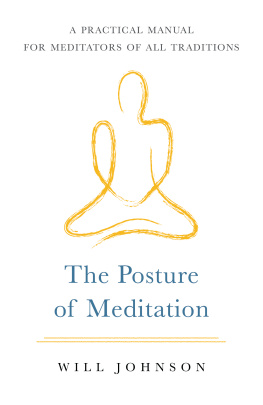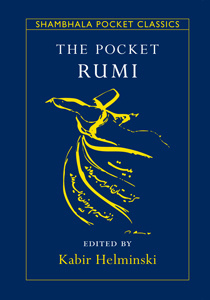The
SPIRITUAL PRACTICES
of
Rumi

Instead of recycling old information, Will Johnson brings new light to the understanding of Rumi with this book. This is how we can bring Rumi to our life rather than bury him in scholarly libraries.
Nevit O. Ergin, translator of Rumis Divan-i Kebir
In these most troubled of times, Johnson makes available for any and all the secret of beholding the divine in sacred friendship. This makes for sensitive and intriguing reading that goes right to your heart.
Jos Argelles, author of Time and the Technosphere:
The Law of Time in Human Affairs
The
SPIRITUAL PRACTICES
of
Rumi
Radical Techniques for
Beholding the Divine
WILL JOHNSON

Inner Traditions
Rochester, Vermont
This book is dedicated to the tribe of gazers
past, present, and future
some of whom Ive met,
all of whom are my family.

Acknowledgments
F irst of all, I want to thank the many gifted translators and poets whove brought Rumi to the English-speaking world and whove made him the most popular poet in the world today: A. J. Arberry and Nevit O. Ergin, Robert Bly and Coleman Barks, Andrew Harvey, Kabir Helminski, Sharam Shiva, and James Cowan among others.
Many years ago, as a young man, while wrestling with the experiences that the practice was revealing to me, I began searching through the spiritual literature in hopes of finding some mention of a lineageanything that might help reassure me that the path I had accidentally stumbled upon was leading not to greater confusion but to greater wisdom. On the very first page of the very first Rumi book that I ever opened I found exactly what I was looking for.
Early on in the writing of this book, I realized that I needed to befriend a Rumi scholar to help guide me in my work. Imagine my utter surprise and delight when I went into a bookstore and picked from the shelf Signs of the Unseen, a translation of Rumis discourses, only to realize that the author, W. M. Thackston Jr. of Harvard University, was an old friend of mine from undergraduate days at Princeton! Thank you, Wheeler, for all the reading and rereading that youve done, for your patience in answering my endless lists of questions, for our correspondence about shad roe and birds nests, and for all your encouragement and support.
Emily Sell of Shambhala Publications, in addition to being the editor for several of my books, has become over the years one of my dearest friends, supporters, confidantes, and even a partner in the practice. We share with each other an equal fascination in the challenge of expressing through words what words alone can never describe, this great domain of the heart and soul. It was Emily who first suggested that I write a book about the gazing practice, and it was Emily who encouraged me to read as much of Rumis writings as I could get my hands on to determine if my hunch that he and Shams were engaged in the gazing practice was, in fact, accurate.
Im extremely grateful to Jon Graham, the acquisitions editor of Inner Traditions, and to Jeanie Levitan, the managing editor, for their courage and vision in supporting this project. Of all the publishing houses who saw this book, it was Inner Traditions that truly understood the value and implications of what Id done and who were not only willing, but excited to participate in a project that many more cautious people viewed as too controversial.
I would also like to make special mention of Laura Schlivek, my exceedingly thoughtful project editor at Inner Traditions, and Dana Walsh, my copy editor. Copy editors in particular are the unsung heroes of the publishing industry, and Danas contribution has gone far beyond matters of syntax and grammar, making this a much more enjoyable book for you to read.
Most of all, I want to thank the many friends and consorts in the practice whove come into my life and whove taught me so much: Phil, whose generosity in stopping to pick me up hitchhiking on a street corner in Berkeley changed my life; Joka (Ma Ananda Kavita), who had been introduced to the practice during long private visits with a young Bhagwan Shree Rajneesh in the 1960s in Bombay and whom I look upon as my Shams; Sue, a night owl who nevertheless, and without complaint, always accepted that my punctual ten oclock yawns signaled that it was time to let me go to sleep; Jack Downing and Lyn (in the world of Argentine tango at which she excels, invitations to the dance are never expressed in words, but only through eye contact!), who told me of Oscar Ichazos approach to the practice; my son Kailas, who engaged me as deeply in the practice as Ive ever gone just one minute after he was born (who could have known that twenty years to the day after that event I would finish this manuscript?!); Ali (Fish), who brought happiness and wealth back into my life; Carla (Crow), who forced me to find the gold that lies buried over in them thar hills of heartbreak; all of the many students and friends Ive met through my affiliation with the Institute for Embodiment Training.
For many years now, Bob Nelford has remained my primary male friend in the practice. Shams needed to find someone to endure his company, and Bob has mostly managed to tolerate mine. The same inner voice that comes to me during my practices and helps me to understand further how this all works comes to him now as well. We start and finish each others sentences, and many of them have made their way into this book.
And, finally, theres Courtenay (Pony), proof positive that angels sometimes speak with a hint of a Fort Worth drawl. It was you who showed up. It was you who God sent through my door. It was you who said yes, who always, without hesitation, kept saying yes, and who summoned me to respond in kind, in love, and through that response (what else could we do?!) we became funnels through which we poured ourselves into God.
May this book serve as an invitation and call to the tribe of gazers to reassemble and find one another once again. Svaha!

Introduction
J ust as archers fix their gaze upon a distant target before loosing the strings of their bows and sending their arrows flying, so do lovers of God fix their gaze on the face of God, each releasing the soul so it too can fly toward its target where it celebrates its homecoming. All spiritual paths teach us that if we want to find God, then we need to turn directly toward God, come face-to-face with the energies of the Divine, and then surrender to whatever begins to occur as a result of the impact that such an encounter creates in our lives. But where do we turn? And where exactly is it that we find the face of the Divine? Is it everywhere? Or in one particular location only? And can perhaps a particular location, a particular face, serve as the doorway to the face of God?
One way to look upon the face of God is to create an image of God, either a painting or a sculpture, and then gaze at the image for an extended period of time. This practice can be found in the Greek Orthodox church where icons of saints and personages from the Bible are the only companions that monks and nuns take with them into the isolation of their cells during long periods of retreat. When one fixes his or her entire attention on these images over long hours and days, the images may come to life and enter into animated dialogue with the practitioner. Many devout Hindus create personal shrines in their homes and temples in which images of a god or goddess serve as the means for personal dialogue with the Divine. It is said that the eyes of these images are the most important of all the facial features, for by creating eye contact with the image a devotee achieves
Next page
















